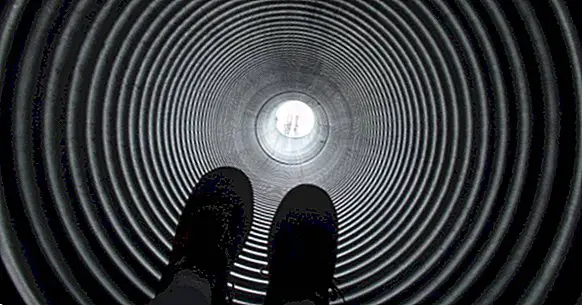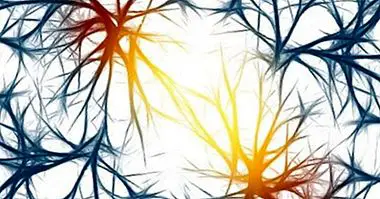The 11 major disorders of attention (and associated symptoms)
Attention is one of the most basic cognitive processes, since it allows to focus mental resources on specific foci for carrying out other psychological operations, such as the perception of environmental stimuli. Different types of alterations, both organic and lacking, can cause alterations in this function.
In this article we will describe the characteristics of the 11 main attention disorders . Most of them fall into the category of hypoprosexias (alterations due to attentional deficits), although it is also important to mention hyperprosexias, aprosexias, paraprosexias, and pseudoaprosexias.
- Maybe you're interested: "The 16 most common mental disorders"
The main disorders of attention
Psychopathological disorders of attention are usually classified according to how they affect this cognitive function: specifically, we talk about aprosexia, hyperprosexia or hypoprosexia, among other terms , depending on whether they involve the increase, decrease or absence of attentional resources. In any case, these concepts are somewhat confusing.
Hypoprosexias, which are characterized by reduced ability to respond to stimuli, are the most common attention disorders. Within this category we find phenomena such as distractibility, emotional attentive lability, inhibition of attention, neglect syndrome, fatigability of attention, apathy or perplexity.
1. Aprosexia
The aprosexia is defined as the total absence of attention ; in this sense we could say that it constitutes an extreme form of hypoprosexia. The phenomenon of stupor, in which the person does not respond to almost any type of stimulation and which is associated with psychosis, epilepsy, the consumption of toxins and brain injuries, is the best example of aprosexia.
2. Pseudoaprosexia
In the literature on the psychopathology of attention, this term is used to refer to cases that apparently correspond to the signs of aprosexia, but which, however, do not imply true alterations in attention. A) Yes, the pseudoaprosexias are framed in hysterical and simulation contexts , fundamentally
3. Hyperprosexia
There is talk of hyperprosexia when, in the context of a transient alteration of consciousness (caused by manic episodes or drug use, mainly), there is an intensification and / or an excessive focus of attention, often accompanied by hypervigilance and hyperlucidity. . Like hypoprosexia, destabilizes attention and worsens performance .
4. Paraprosexia
This concept is used to describe two different types of alterations. Karl Jaspers was talking about paraprosexia as the anomalous direction of attention that occurs in disorders such as hypochondria, in which the excess of concern for certain physical signs can increase them. Other authors consider that paraprosexia is similar to attentional instability.
5. Distrability
In psychopathological contexts such as attention deficit hyperactivity disorder, manic episodes or the crepuscular states of epilepsy, there is a marked instability of the attentional focus. In this sense the distraction it's a type of hypoprosexia , as are the rest of the alterations that we will mention.
- Related article: "Twilight state: what it is, symptoms and causes"
6. Attentive emotional lability
The context "emotional attentive lability" is used in a very specific way to define the alterations in the stability and the performance of the attention that they are derived from intense anxiety states , for example those that could occur in disorders such as generalized anxiety disorder.
7. Inatention or inhibition of attention
In these cases, the term refers to the reduction of the ability to direct attention to a particular focus. The inhibition of attention may have an organic origin (in which case it tends to be disoriented and memory problems) or psychological, as in melancholic depression and chronic psychoses.
8. Attention fatigability
Post-traumatic stress disorder, severe depression, tumors and brain infections or neurodegenerative disorders, especially dementias, frequently cause alterations due to deficits in attentional functions. People with attentional fatigability usually feel tired in general and present memory problems .
9. Apathetic attention
We find manifestations of attentional apathy in very different contexts: in conditions of intense fatigue and sleep, due to malnutrition, by abusive consumption of certain psychoactive substances, in diffuse neurodegenerative disorders or in asthenic-apathetic states. In some cases it is simply attributed to the personality of the subject .
10. Perplexity
In the area of psychopathology of attention, the term "perplexity" defines a type of qualitative alteration of this function that implies a inability to give meaning to perceived stimuli , as well as their own behaviors. Although it is a very questioned concept, it could be applied to phenomena such as crepuscular states.
11. Negligence syndrome
The syndrome of left space heminegligencia (or simply "neglect syndrome") is a very particular brain disorder that appears as a consequence of focal lesions in the right hemisphere of the brain. The most representative symptoms include spatial neglect , inattention and akinesia for one half of the body or the visual field.
Bibliographic references:
- Froján, M.X. and Santacreu, J. (1999). What is a psychological treatment? Madrid: New Library.
- Gavino, A. (2002). Help guide for the cognitive-behavioral therapist. Madrid: Pyramid.
- Luciano, M.C. (nineteen ninety six). Manual of clinical psychology. Childhood and adolescence Valencia: Promolibro.



















